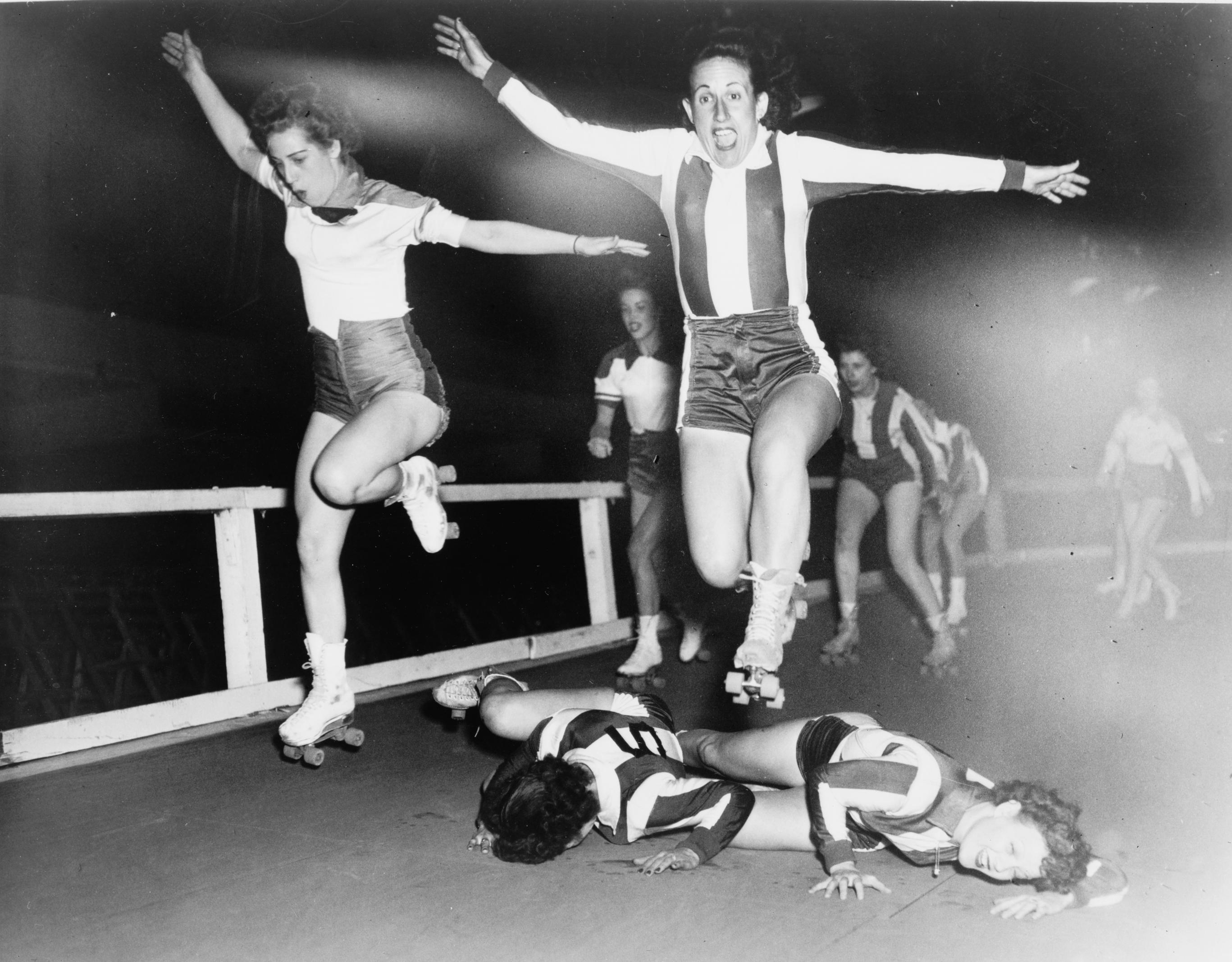As I've been mentioning for the last year or so, I'm an official with New Hampshire Roller Derby. Despite it being the fastest growing sport in the country (and possibly the world), it's still an amateur sport that most people don't know has made a resurgence (or if they do, they presume it's much like the derby of the '70s). Cue iconic picture:

Modern roller derby started as an alternative sport (think elbows and punk rock, a la Whip It) but has evolved to genuine, amateur status (amateur meaning professional without getting paid). The game has dedicated officials, a lengthy set of rules, and is a sport no matter how many sexist newspaper writers fixate on the fact that it's predominantly played by women. (And Jesus do they fixate on that. Look, they have boobs, it can't be a sport! Fuck off, skeezer.)
So here's the short of it. Each team is comprised of 14 skaters. The game (or more lovingly, the bout) is played in two halves of thirty minutes. Each half is segmented into "jams". Each team fields four blockers and one jammer per jam. The jammer wears a star on her helmet to signify that she is the point scorer. (In effect, she is the ball or the puck, but she's human and she's only wearing pads on her knees, elbows, and wrists.) The blockers comprise "the pack". At the jam starting whistle, the jammers must work their way through the pack to be eligible to score. Once they've finished this initial pass, each successive time they pass blockers, they score points (but no more than one point per blocker per lap). They can even score a point by lapping the opposing jammer if she is slow or stuck in the pack.
Where it can get difficult for spectators is that the pack is this nebulous assortment of players from both teams. They're simultaneously playing offense and defense. Sometimes this means stopping and forming odd-shaped walls. Sometimes it means sprinting like crazy. There are lots of hits (blocks) with shoulders, hips, and asses, but no clotheslines or elbows like you see on TV or in the movies (those will earn you a penalty or even get you expelled). There are still fishnets and the occasional tutu, but not as much as you saw five years ago. Now it's mostly jerseys and compression shorts. Yeah you get pink hair, piercings, and tattoos, but just because they're a little rough and tumble doesn't make them less athletic.
People like to fixate on the names (mine is Charles Dickins, in case you were curious). It's a constant conversation within the community. A lot of people are starting to give up derby names in an effort to gain respect and to be taken seriously. Others don't want to give up their names and there are myriad reasons for it. Some use it as a shield, something to allow them to have the confidence they're not allowed to have in their real lives (because they have boobs and we don't want boobs to be confident); others use it to hide from work because no one wants their kindergarten teacher showing up with a black eye after taking a stray elbow to the face); and still others keep theirs because it was part of the fun and whimsy that drew them to the sport to begin with. Again, if you think that real sports don't use pseudonyms, I direct you to Pistol Pete Maravich, Magic Johnson, his Airness, and King James and politely ask you to shut the fuck up.
Last thing in this brief lesson. There is a second helmet cover on the track. One of the blockers may be designated as a pivot. The pivot is a blocker with special privileges. The jammer may, if she chooses, remove her star helmet cover and pass it to the pivot. This causes the pivot to become the jammer. She may do this because of injury, equipment malfunction, or getting stuck in the pack. For first timers, it can add a level of "what the fuck is going on" to an already chaotic pack, but once you've seen a few bouts, the strategy starts to become more clear.
So, with that growth and maturity of the sport, the iconic picture of the '70s has now become more like this:
